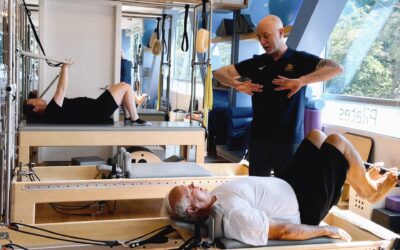Healthy Pelvic Floor For Men
News flash guys. As much as you’d like to think, women do not have this market cornered. You too have a pelvic floor. And yah, it can give you grief!
Like women, your pelvic floor region is made up of multiple layers of muscles, which are controlled by your nervous system and supported by layers of fascia/connective tissue which connect the muscles to the bony skeleton. And when all these layers are not operating in an optimal fashion, you can experience a host of symptoms: from pain, to discomfort, to incontinence. The list goes on and the reasons why you may be experiencing these symptoms can vary. Some for apparent reasons, such as injury, or due to surgery. Some for reasons completely unexplained. Whatever is causing your discomfort, our Healthy Pelvic Floor Program for Men will help identify and treat the source of your dysfunction.
To better explain, it may be easiest to separate two very distinct reasons why men, who are experiencing pelvic floor dysfunction, visit Synergy Physio + Pilates.
Chronic Pelvic Pain Syndrome (CPPS)
Statistics suggest that 1 man in 10 will, at some time in his life, visit his doctor complaining of some sort of pelvic floor discomfort/pain. From there it’s highly likely he’ll be diagnosed with a prostititis and prescribed an antibiotic, in the hope of relieving his symptoms. You’re having pain/discomfort “down there.” So it must be your prostate. Right? Not always. In fact, not often.
The truth is, Chronic Pelvic Pain in men is rarely related directly to the prostate. It certainly can be, but there’s a much higher probability you suffer from Chronic Pelvic Pain Syndrome (CPPS), an affliction that– other than proximity– maintains no relationship to the prostate. The pain men experience from CPPS is related to the non-optimal patterning of the layers of muscles and connective tissue in this region. Whatever the reasons, symptoms associated with CPPS are very real and can range from slight-to-excruciating.
Symptoms may include, but are not limited to:
- Perineal Pain (between the anus and scrotum)
- Sitting Pain (often the sensation of feeling like you’re sitting on a golf ball)
- Urinary Frequency and Urinary Urgency
- Dysuria (pain or burning during urination)
- Nocturia (frequent urination at night)
- Reduced Urinary Stream and Urinary Hesitancy
- Pain or Discomfort During or After Ejaculation
- Genital Pain
Our Healthy Pelvic Floor Program for men is highly beneficial for men experiencing one, or a combination of, the above list of symptoms. And while our Program can help these men– men who do not require surgery– it is also designed to help men experiencing other types of pelvic floor dysfunction, for different reasons? Dysfunction associated with post-prostatectomy, for example.
Post-Prostatectomy
A common side effect of prostate surgery is urinary incontinence, or the involuntary leaking of urine. Many men live with this problem and do not realize it can be significantly improved or fully resolved through physiotherapy.
Our pelvic floor therapists have special training in the assessment and treatment of the male pelvic floor: the muscles, connective tissue and organs that help control the flow of urine. Post surgery, many men are advised to work on pelvic floor contractions but they end up doing these exercises with too much force or effort, or ineffectively. Often, using too much effort to contract the pelvic floor results in large increases in intra-abdominal pressure, which actually makes it more difficult for the pelvic floor to do its job and makes incontinence worse. So post-surgery, it’s important to learn how to properly contract your pelvic floor muscles and what not to do. This is often different from what you expect. Education is also provided to help you understand the surgery and the way your body functions post-surgery.
Furthermore, many men don’t realize that the movement strategies and old injuries they have had can actually contribute to how well they are able to effectively rehab and train their pelvic floor function. It is no coincidence that many men with pelvic floor problems also experience back pain – either concurrently or in their past. With ConnectTherapy™, our pelvic floor therapists will do a whole body assessment and use current research to determine all the factors and influences that are affecting your pelvic floor function. We will create an individual program for you, designed to optimize the forces on your pelvic floor and create the best environment to support and train your pelvic floor function. This whole person approach to the pelvic floor has helped many men who have found simply practicing “kegel” exercises, or doing myofascial trigger point release with a wand, to be ineffective.
At Synergy Physio + Pilates, if you have problems with your pelvic floor we not only perform a specific PF assessment, but we first do a complete whole-body (ConnectTherapy™) assessment. We then combine the findings from our whole body assessment and the internal pelvic floor assessment to determine the most effective and efficient treatment plan for you, designed to match your individual needs.
Our Healthy Pelvic Floor Program also involves helping you understand the various influences on your pelvic floor function – things like why and how it’s important to avoid straining when trying to have a bowel movement, and how to change your bowel and bladder habits to support your pelvic floor health. We do this education in a group lecture setting, so that your one-on-one physiotherapy sessions can be focused on your individual needs.
As a new patient to the Healthy Pelvic Floor Program, you will be asked to:
- attend the Healthy Pelvic Floor education lecture (complimentary)
- book a whole body assessment with one of our Healthy Pelvic Floor therapists
- book a pelvic floor assessment with one of our pelvic floor trained therapists (for men)
We’ll then have all the information we need to create an individualized treatment program to help you reach your goals.
Our Blog
Insights and Tips from Our Experts
Next Group Physio Healthy Bones™ Class starts Wed. Sept 13th – Sign up now!
Are you interested in improving your balance, stability, muscle strength and bone health? Then this class is for...
Shockwave Therapy – What is it & How can it help?
Shockwave therapy has become increasingly common as a treatment option for musculoskeletal conditions to assist...
Running and Pregnancy
Running has become a very popular sport, and more than half of recreational runners are women. For runners who...



